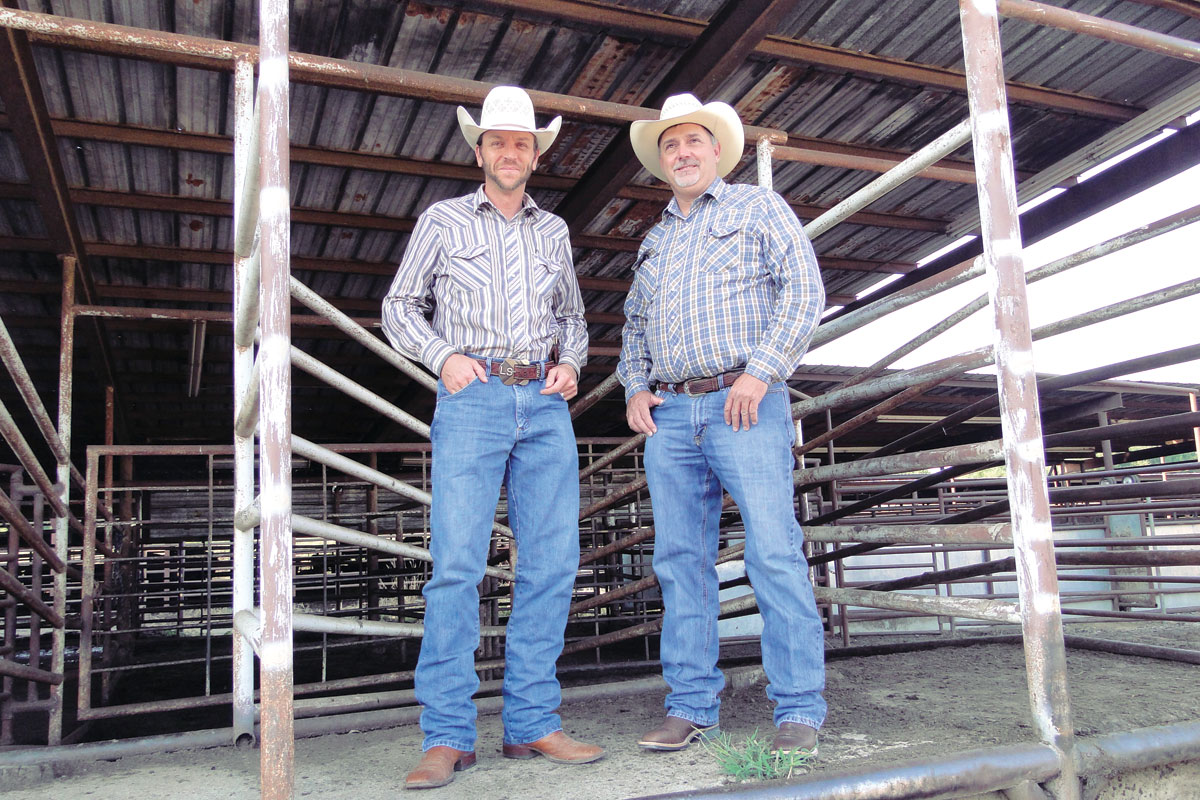The growing demand from consumers for goat meat, also called chevon or cabrito, is what prompted Lanny Avey and his wife Debbie to start raising goats on their Rocky Valley Boer Goat Farm. They live on the 50 acre farm near Landis, Ark., part of the land that once belonged to his grandfather. Since 2002 Lanny has been raising and selling Boer goats. The reason for that breed is that they are specifically meat goats. Where resources are limited, a small herd of goats may be the preferred livestock that a farmer raises. Boers have a reputation for high fertility. Lanny’s focus is on quality animals, and these have excellent carcass qualities, are hardy, adaptable, and have mild temperaments, making them easy to handle.
“Most of our goats are full-blood, registered Boers,” he said. “A few are purebred. They are intended to be raised for meat, and they grow off faster than other breeds.”
In the summer of 2007 he had 96 head, but because of drought he sold over half of them. At this time he has 36 adult females, two adult males and is raising one more male. So far this season 14 babies were born, making a total of 53 with new babies coming nearly every day.
“They don’t grow off as good in dry weather,” he said. “But we started feeding them more and they started picking up weight. We have regular milk goats, so if the mamas don’t give enough milk for their babies we bottle feed them. And if we wind up with orphan babies, we bottle feed those. It's been our experience that we have to really watch them, and it’s hard work.” With a wide grin he added, “This goat race isn’t as easy as some people think it is.”
His three dairy goats consist of two Nubians, and one crossbred, half Alpine and half Toggenburg. Goat milk is widely used for human consumption also; similar nutritionally to cow milk, but it contains smaller fat globules. As a consequence it’s easier to digest.
“We drink it all the time,” Debbie said. “It freezes well also, and we can freeze and save the colostrum for our kids.”
MARKET NICHES
Boers are to the meat goat industry what imported cattle were to the beef industry. People with digestive problems that require a careful diet prefer goat meat because it digests more easily. It’s high in protein, low in cholesterol and fat, a good tasting alternative to chicken and fish. The meat is generally quite lean, although its higher moisture content makes it tender.
Another direct market niche is the opportunity for meat breeding stock. Lanny takes his males to the sale barn in Salem, Ark. Commercial meat breeders pay much more for breeding stock, than farmers might expect to receive for the same animal by the pound. This versatility allows him to plan and operate a more stable economic production practice. Boers consistently produce more muscling in less time than other breeds, and will pass this capability to their kids.
HUSBANDRY PRACTICES
Like any other animal production enterprise, good husbandry practices must be followed in raising goats in the areas of sanitation, health, feed, water and shelter. Lanny’s improvements on his farm this year include more cross-fencing for better rotation of pasture.
“Separate pastures allow me better worm control,” he said. “We feed Alfalfa pellets, and 50-50 All-grain, for more milk production. We keep loose minerals out all the time, with copper supplements. We’re working on a better quality of grazing, Lespedeza and Orchard Grass. Even with all the work, I really enjoy what I do. My job at the Timbo School gives me a chance to furnish goats for the students to show at the district fair. We all have fun doing that.”
Lanny uses selective breeding for once-a-year kidding. This allows for good management in exposing the doe kids to the bucks. He has three barns, so the goats have a place to get out of any bad weather. Farmers like him, who advertise, keep good records, raise quality disease free animals, and let the meat producers know they are out there, will always have a market.






